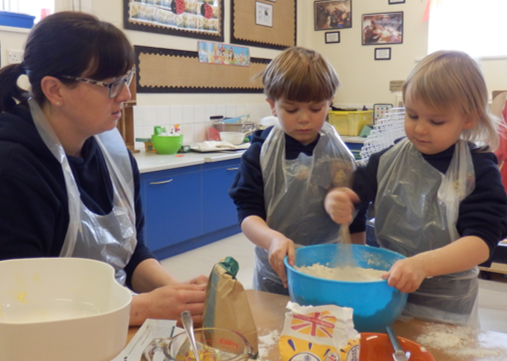Key points:
Warm, trusting relationships with knowledgeable adults support children’s learning more effectively than any amount of resources.
Follow the child’s lead to the meeting of minds.
Tuning in, observing and wondering come first.
A knowledgeable practitioner can decide when to stand back, when to interact, and what to offer the child.
Learning together with adults and with other children is important across all contexts.

Warm, trusting relationships with knowledgeable adults support children’s learning more effectively than any amount of resources. We are all social beings, and babies and children who feel secure and listened to will turn to their trusted adults to share their experiences. Emotional wellbeing is the first necessity for successful learning, and adults who respect children’s feelings, show empathy, and support children to manage their feelings are helping to lay the foundations for development and learning.
The quality of adults’ interactions with children has an immense impact on whether their experiences result in making the most of the learning opportunities. Children learn from adults both supporting their current development and learning, allowing time for this to deepen and be consolidated, and from adults introducing new possibilities.
Follow the child’s lead to the meeting of minds. It is necessary to establish rapport in an interaction, so that children are ready to include the adult in their activities. This means being careful not to impose the adult agenda on a child, but finding a meeting point within an experience where attention and interest can be shared. Adults are able to put themselves in others’ shoes to understand what might be in someone else’s mind, and can direct their mature attention at will. These abilities are at early stages of development for young children, who cannot necessarily be expected to understand, find interesting, and be able to pay attention to what an adult proposes. It is up to the adult to meet the child at their point of interest.
As children gradually develop the ability to focus on an adult agenda, brief and lively adult-led sessions can be opportunities for thinking and learning. Within group sessions which are planned in response to children’s interests and current levels of development and learning, the adult can still interact with individual children according to their own needs and differentiate through tailored responses to each child.
Tuning in, observing and wondering come first. By being a sensitive observer, tuning into the child’s actions and communications whether through gesture, facial expression, or words, the adult can begin to focus on the central question that characterises an effective teacher: What might the child be thinking about, and learning about right now?
Knowing the child well helps in understanding what might be in the child’s mind – the links they are making, and whether they are exploring new ideas or gaining more information about existing thinking, as in schema play, for example. A sensitive observer can show interest in what the child is doing, but will also wait to be invited with a word or a look before joining the child’s point of interest. The adult may wonder aloud about what is happening so as not to impose their ideas or to demand a response. Respect for the child’s autonomy matters, and even very young babies can indicate whether or not they welcome an interaction.
A sensitive and knowledgeable practitioner can decide when to stand back, when to interact, and how to respond to the child. Sometimes a child is deeply engrossed in what they are doing, and the adult can stand back to observe and gain understanding about how they might later build on this experience. At other times, the adult may decide to offer support for the learning. A to-and-fro conversation, or helping to keep the child’s attention on the activity, for example, might support the child to consolidate ideas and refine skills. Or it may be the moment to extend the learning through introducing a new idea or resource, new information or a new challenge, scaffolding the child’s engagement, and finding opportunities for sustained shared thinking.
Learning together with adults and with other children is important across all contexts. Carefully tuned interaction with skilful adults makes a difference all the time – when supporting children engaged in their play or other child-initiated activities, and also in adult-led activities. When adults plan experiences with particular learning objectives in mind, it is important to remember that learning occurs when a child makes sense of information and links ideas to existing understanding. Direct instruction of material with no meaningful link in the mind of the child is likely to result at best in shallow recall, without the child being able to use the knowledge. Instead, adults can support the way a young child learns. Starting with information from physical, real-world experiences, a child then shapes and sharpens their thinking as they represent ideas through playing, talking, drawing or other graphics, and finally forms a clear mental image that makes sense to the child.
Through tuning in to the child’s thinking and working together to find the links to what is already known, the skilful adult can provide a bridge as the child steps into new ideas. It is the way that the learning opportunities are tailored in the moment to meet the needs of each child.
Children are not just learning in collaboration with adults. Playing and interacting with other children in all types of activities are opportunities to find themselves stretched, and sometimes pushed out of their comfort zones, by other children’s ways of thinking, communicating and behaving. Adults can ensure children have opportunities to engage together, to collaborate, or just to play alongside each other and learn from each other’s support and stimulation. Adults also support learning by planning for opportunities for children to learn by themselves, as they engage with the world around them in a well-resourced environment.
Previous page: Attachment and the role of the key person | Next page: Learning environments
